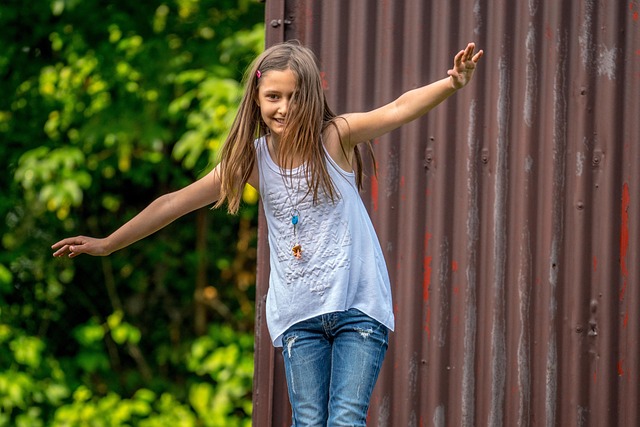Promoting children's rights and well-being involves understanding their fundamental freedoms and protections, including life, health, education, and freedom from abuse. Well-being includes physical, emotional, social, and intellectual needs. Ensuring child safety requires robust policies, regular risk assessments, behavior monitoring, and early intervention. A multi-faceted approach involving awareness education, accessible reporting mechanisms, community collaboration, and empowerment fosters a safe environment for children's growth and development.
In every society, promoting the rights and well-being of children is paramount for a prosperous future. Understanding the scope of child rights and recognizing potential hazards that put them at risk is the first step towards ensuring child safety. This article explores strategies to safeguard our youngest members, from identifying risks to implementing safeguards and empowering communities through collective action. By delving into these key areas, we can create an environment where every child thrives.
Understanding the Scope: Defining Child Rights and Well-being
Promoting the rights and well-being of children is a multifaceted endeavor that requires a comprehensive understanding of what constitutes a child’s rights and needs. In essence, child rights encompass various fundamental freedoms and protections designed to ensure their safety, development, and dignity. These include the right to life, health, education, protection from abuse and exploitation, and participation in matters affecting them. Well-being, on the other hand, is a broader concept that involves meeting a child’s physical, emotional, social, and intellectual needs.
Defining these concepts clearly is crucial for effective advocacy. By recognizing and prioritizing child rights, we establish a framework for creating environments that promote their growth and development. Ensuring child safety, both from physical harm and psychological trauma, stands as a cornerstone in this pursuit. This involves implementing policies and practices that protect children from abuse, neglect, and exploitation, while also empowering them to make informed decisions and participate actively in communities.
Identifying Risks: Recognizing Potential Hazards for Children
Identifying risks is a pivotal step in ensuring child safety and well-being. Potential hazards for children can manifest in various forms, from physical dangers like accidents and violence to psychological issues stemming from neglect or exposure to trauma. By staying vigilant and proactive, we can create a safer environment for them to thrive.
Parents, caregivers, educators, and the wider community play crucial roles in this process. Regular risk assessments at home, school, and within the neighborhood can help uncover hidden dangers. Being attuned to changes in behavior, physical health, or emotional state can provide early warning signs of potential risks, enabling timely intervention and support.
Implementing Safeguards: Strategies to Protect Our Youngest Members
Implementing robust safeguards is paramount in ensuring child safety and well-being, especially in diverse circumstances where risks may lurk unnoticed. Strategies to protect our youngest members must be multi-faceted, encompassing both preventive measures and swift interventions. One key approach involves enhancing awareness and education among caregivers, teachers, and the broader community about potential hazards and the signs of abuse or neglect. Regular training sessions can equip them with the skills to identify at-risk children and take proactive steps to safeguard their interests.
Additionally, establishing robust reporting mechanisms and support systems is essential. This includes encouraging open dialogue where children feel comfortable sharing concerns without fear of retaliation. Accessible and confidential reporting channels, coupled with prompt investigations, can deter harm and intervene early. Collaborating with local authorities, non-governmental organizations, and community leaders further strengthens the safety net, fostering a collective responsibility to protect and nurture our future generations.
Empowering Communities: A Collective Approach to Ensuring Child Safety
Empowering communities is a collective approach that holds immense potential in ensuring child safety. By fostering a culture of involvement and active participation, where parents, caregivers, teachers, and neighbors become vigilant guardians, we create a robust support system for our young ones. This collaborative effort enables everyone to stay attuned to the unique needs and vulnerabilities of children within their neighborhoods.
Through community engagement initiatives, such as neighborhood watch programs, parent-teacher associations, and local support groups, individuals can collectively identify potential risks and quickly intervene when necessary. These collective actions not only enhance the immediate safety net for children but also foster a sense of security and well-being that extends far beyond individual households. By joining forces, communities become powerful advocates for the vulnerable, ensuring that every child feels safe, protected, and valued.
Promoting the rights and well-being of children is a collective responsibility that requires understanding, vigilance, and action. By defining child rights and recognizing potential hazards, we can implement effective strategies to protect our youngest members. Fostering a culture of community engagement and empowerment is key to ensuring child safety in all circumstances. Together, we can create a world where every child thrives, free from harm and empowered to reach their full potential.
